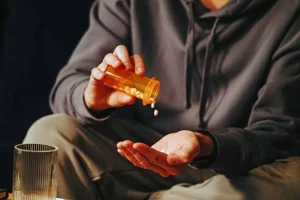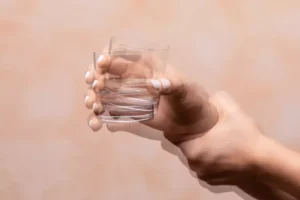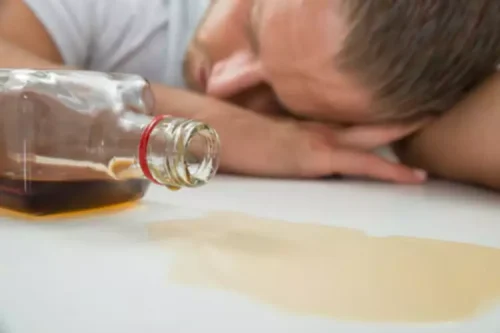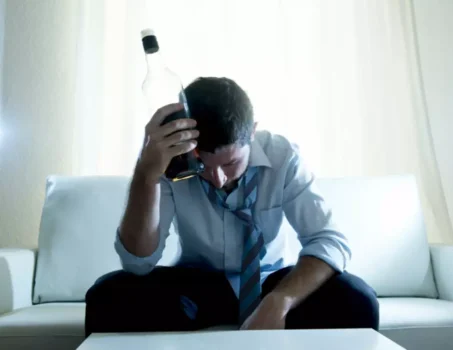
Symptoms appear within a week of an injury, such as whiplash or a traumatic brain injury (TBI). It causes headache symptoms as well as TBI symptoms such as confusion, fatigue, irritability, and anxiety. “It can be easy to miss depressive symptoms when work is tricking you into feeling competent and self-efficacious,” Velez said. Because of the complicated relationship between depression and alcohol use, Lurie says it’s best to address both at the same time through a specialized treatment program.
- At the time of this article, she manages her depression with therapy and medication.
- Thus, where possible, this review identifies which version of the DSM was used in a study.
- If the psychiatric symptoms occur, however, as a consequence of the person’s consumption of high doses of alcohol (i.e., the complaints are alcohol induced), then the symptoms are likely to improve fairly quickly with abstinence.
What causes depression and alcohol use disorder?
The interactions between alcoholism and these disorders are evaluated by posing a series of questions, and the reader is encouraged to review the articles cited in the reference list. In keeping with the guidelines of Alcohol Health & Research World, review articles are emphasized. Readers interested in more https://ecosoberhouse.com/article/10-celebrities-who-died-because-of-alcoholism/ detailed descriptions of the methods of particular studies, however, are referred to specific citations within those reviews. It is, therefore, not surprising that more than one out of every three alcoholics has experienced episodes of intense depression and/or severe anxiety (Cox et al. 1990; Wilson 1988).
- When this occurs infrequently, the risks are relatively low for long-term conditions to develop.
- If you consume too much alcohol, it can depress your CNS to the point of death.
- At some point, it dawned on Mike that his use of alcohol might be unhealthy.
How alcohol affects your brain
Our compassionate team proudly provides advanced therapy options to treat both substance abuse and mental health issues. We also offer medication-assisted treatment (MAT) to relieve withdrawal symptoms, decrease the risk of overdose, and provide overall support to the addiction recovery process. People with AUD have a heightened risk for depressive disorders, which are the most common co-occurring psychiatric disorders for this population. AUD and depressive disorders appear to share some behavioral, genetic, and environmental risk factors, yet these shared risks remain poorly understood.

Stop drinking if you start to feel bad
- It includes mindfulness as a strategy to manage discomfort as it occurs.
- If you wake up feeling miserable after a night of drinking, you don’t have to wait it out.
- Depending on the person, depression may resolve quickly as they overcome their addiction.
- However, treating most alcoholics’ depressive symptoms might not require the use of antidepressant medications.
- In the absence of the data necessary to establish recommended drinking levels for depressed patients, clinicians may need to conduct an idiographic assessment to determine the potential influence of alcohol use on depressive symptoms for a particular patient.
To overcome these patterns, a person must be ready to change of their own accord. But if you think they will be receptive, approach the problem with empathy and nonjudgement, and be prepared to offer solutions. If they are ready, help them research their options, and discuss the best ways for you to be supportive. Removing alcohol from the equation often equals removing a coping mechanism.

He drank daily in his early 20s — around the time when he started experiencing suicidal thoughts. He says his drinking — and depression — “skyrocketed” at age 24 after his grandmother died. “I used can alcohol make depression worse alcohol to cope with feelings of isolation and sadness,” he says. Gillian Tietz, host of the Sober Powered podcast, began feeling depressed around 10 years old when she faced bullying in school.

Prevalence of depressive disorders and AUD
Alcohol Use Should Be Assessed Routinely as Part of Psychological or Psychiatric Care
Alcohol and Depression: The Link Between Alcoholism and Depression
Increases anxiety
- As hangover symptoms begin to subside, the emotional effects may follow.
- There’s a difference between a one-time boring assignment and a worrisome pattern of apathy.
- At first, alcohol produces euphoria and excitement, but such feelings are short-lived.



